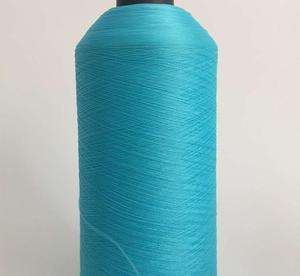Differences in Characteristics between PE (Polyethylene) and Nylon (Nylon)
Polyethylene (PE) is a thermoplastic resin made by polymerizing ethylene.
Polyethylene is very sensitive to environmental stress (chemical and mechanical effects), and its heat aging resistance is inferior to the chemical structure and processing strips of polymers. Polyethylene can be processed using the molding method of general thermoplastic plastics (see plastic processing). Widely used, primarily for manufacturing films, packaging materials, containers, pipelines, monofilaments, wires and cables, daily necessities, etc., and can also be used as high-frequency insulation materials for televisions, radars, etc.
Polyethylene is divided into high-density polyethylene, low-density polyethylene, and linear low-density polyethylene according to different polymerization methods, molecular weights, and chain structures.
Low density polyethylene (LDPE), commonly known as high-pressure polyethylene, is primarily used in plastic bags, agricultural films, etc. due to its low density and the softest raw material.
High density polyethylene (HDPE), commonly known as low-pressure polyethylene, has higher temperature resistance, oil resistance, steam penetration resistance, and environmental stress cracking resistance compared to LDPE and LLDPE. In addition, it has good electrical insulation, impact resistance, and cold resistance, and is mainly used in blow molding, injection molding, and other fields.
Linear Low Density Polyethylene (LLDPE) is a copolymer of ethylene and a few high-end olefins polymerized in the presence of a catalyst. LLDPE has a similar appearance to LDPE, but with lower transparency. However, it has a good surface gloss, low temperature toughness, high modulus, resistance to bending and stress cracking, and better impact strength at low temperatures.
Nylon, also known as nylon, is the earliest type of synthetic fiber to be industrialized and belongs to the category of aliphatic polyamide fibers. The primary types of nylon are nylon 6 and nylon 66. Nylon has a high yield and wide range of uses, and is the primary synthetic fiber type second only to polyester. Nylon is mainly composed of long fibers, with a small amount of nylon short fibers. Nylon filament is primarily used to manufacture strong fibers for the production of socks, underwear, sportswear, etc. Nylon short fibers are primarily blended with viscose, cotton, wool, and other synthetic fibers for use as clothing fabrics. Nylon can also be used in industry as tire cord, parachute, fishing net, rope, conveyor belt, etc.

The main physical and chemical properties of nylon
1. The longitudinal surface of the nylon is straight and lubricated, and the cross-section is circular. Nylon is alkali resistant but not acid resistant. In inorganic acids, the amide bonds on nylon macromolecules will break.
2. Nylon has high strength, large elongation, and excellent elasticity due to its strong stretchability and wear resistance. Its fracture strength is about 42-56cN/tex, and its fracture elongation reaches 25% -65%. Therefore, nylon has excellent wear resistance and ranks first among common textile fibers. It is an ideal material for manufacturing wear-resistant wiping products. But nylon has a small initial modulus, is prone to deformation, and its fabric is not stiff.
3. Moisture absorption and dyeing properties: Nylon has good moisture absorption among common synthetic fibers, with a moisture regain of about 4.5% under general atmospheric conditions. In addition, nylon has good dyeing properties and can be dyed with acid dyes, dispersed dyes, and other dyes.
4. Due to the sensitivity of the end groups of nylon macromolecules to light and heat, nylon may turn yellow and become brittle, resulting in poor light and heat resistance, making it unsuitable for manufacturing outdoor fabrics. In addition, nylon is corrosion-resistant, not afraid of mold, and not afraid of insect infestation.
Article source: Nylon colored yarn
-
05-27
The reason why fabrics containing spandex are prone to yellowing
Spandex is a commonly used fiber variety in our daily lives, characterized by good elasticity, low fineness, high elastic modulus (cracking elongation can reach 400-800), and low specific gravity. Spa
-
04-24
Colored non dyed nylon with synthetic fiber raw material
The current conventional fiber coloring mostly uses yarn dyeing method, which has long process, high loss, high cost, and the product has color difference and low color wash fastness. Yarn is prone to
-
03-26
What are the characteristics of non dyed spandex?
Non dyed spandex has also been widely used in recent years. Non dyed spandex fiber can be blended with fibers such as nylon, polyester, acrylic, cotton, wool, etc., which can give fabrics excellent el
-
02-24
The influence of yarn structure on fabrics
The basic characteristics of yarn include its appearance and shape, twisting characteristics, fiber transfer and distribution characteristics in the yarn, as well as the surface fuzz and internal loos
